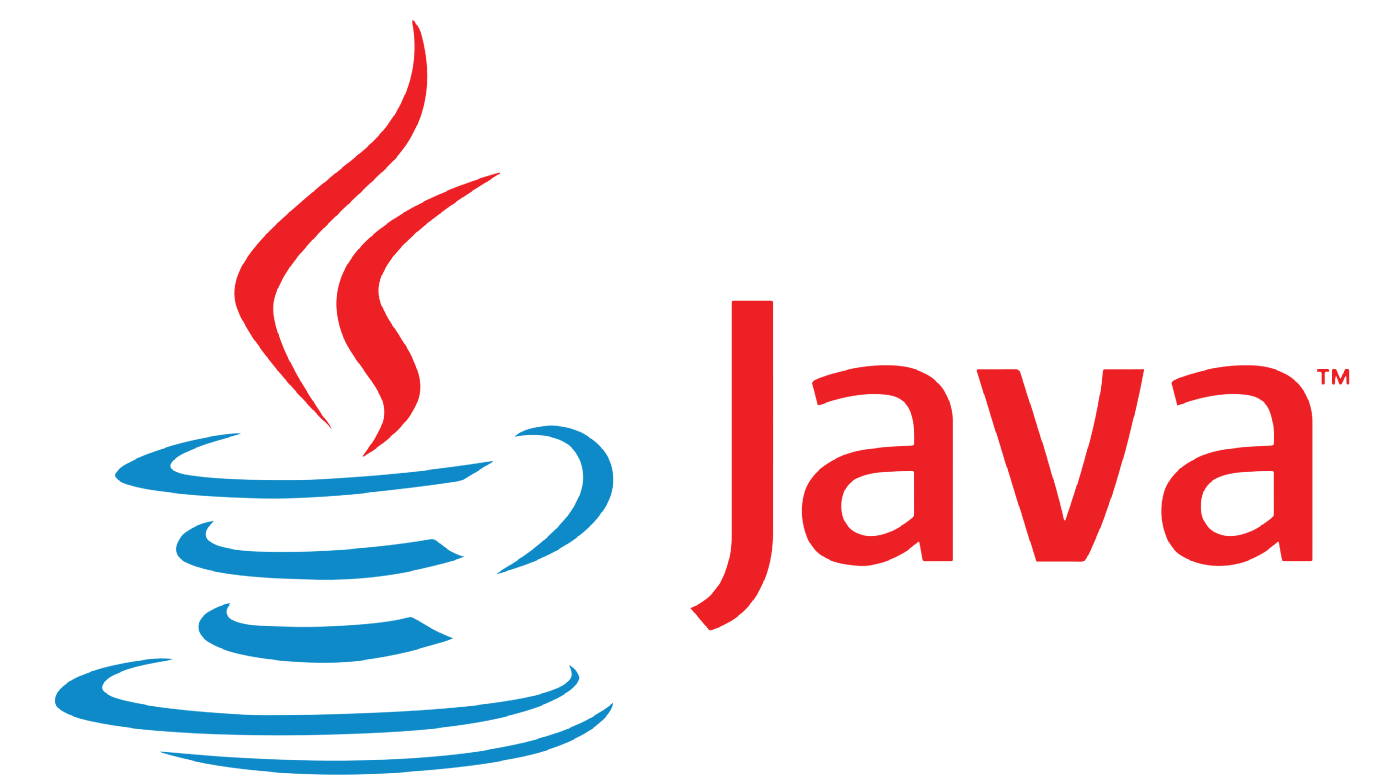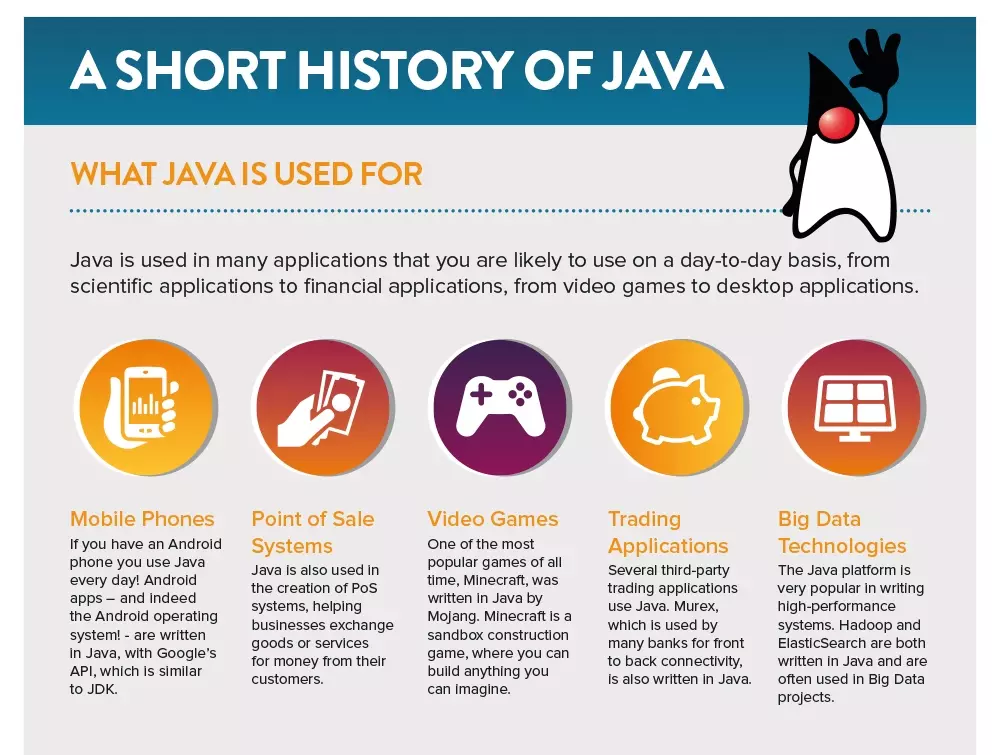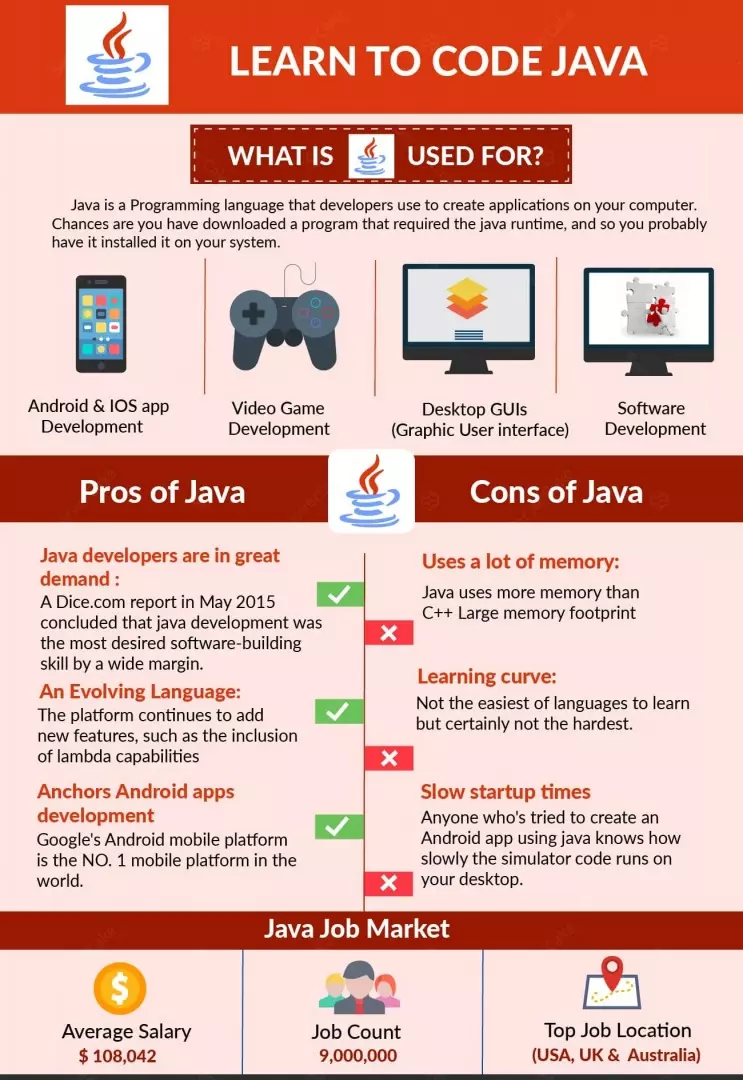Comments
- No comments found

Data scientists should learn Java because it provides a host of data science functionalities such as data analysis, data processing, statistical analysis, data visualization, and natural language processing (NLP).
Java is an object-oriented, versatile, and unique language that offers tons of functionality.
Its excellent performance and speed makes it one of the most sought after skills in the market. It also provides security capabilities, network-centric programming, and platform-independence.

Souce: Pearson Frank
Java is very versatile as it is used for programming applications on the web, mobile, and desktop using different platforms. Also, Java has many features such as dynamic coding, multiple security features, platform-independent characteristics and network-centric designing that make it quite versatile.
Java is one of the most in-demand programming languages used today.
As a data scientist, you should know how to use Java as it offers a host of other services to create a business application.
Many big companies like Uber, Spotify, and Airbnb are based on Java.
Here are many reasons why data scientists should learn Java:
1. Java is easy to understand
2. Java is free of cost
3. Java has many excellent frameworks for data science
4. Java has excellent scalability capabilities
5. Java has great documentation support
6. Java has an abundant API

Source: ServerCake
Data science is, when it comes right down to it, the application of programming to stochastic methods and probability theory. Both statistics and probability theory require specific data structures in order to compute, and as such are largely independent of any one programming language. Statistics oriented packages such as R or Python Pandas both provide a pretty decent set of tools for working with these algorithms, with Scala (especially for Spark) becoming a more commonly used tool.
However, there are numerous packages in the Javascript space which provide both the algorithms involved and the data manipulation structures, and Javascript (arguably) has a much better variety of data visualization suites. Thus, you are beginning to see a growing number of coders using Javascript for statistical analysis and visualization work. Javascript also has a larger utility in general - in web design, in database services (especially in the NoSQL arena) and in conjunction with graph databases.
Why not take the time to learn both, if you’re learning these from scratch. Javascript is undergoing a profound renaissance right now, and as such you can do things with Javascript today that were unthinkable even five years ago. As data operations increasingly work with open APIs that are language agnostic, I suspect you’ll see more and more data science work conducted in Javascript.
Kurt is the founder and CEO of Semantical, LLC, a consulting company focusing on enterprise data hubs, metadata management, semantics, and NoSQL systems. He has developed large scale information and data governance strategies for Fortune 500 companies in the health care/insurance sector, media and entertainment, publishing, financial services and logistics arenas, as well as for government agencies in the defense and insurance sector (including the Affordable Care Act). Kurt holds a Bachelor of Science in Physics from the University of Illinois at Urbana–Champaign.
Leave your comments
Post comment as a guest